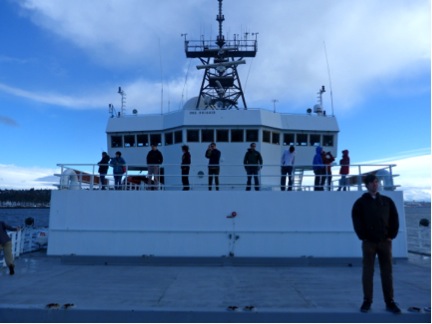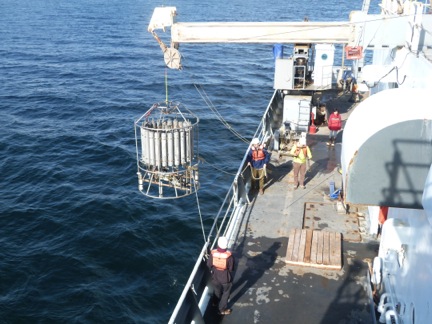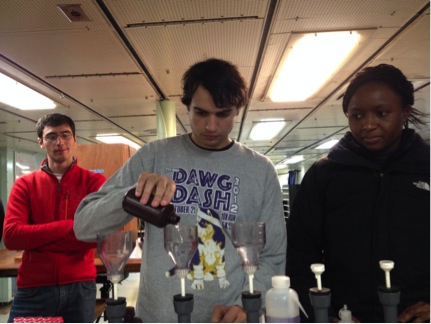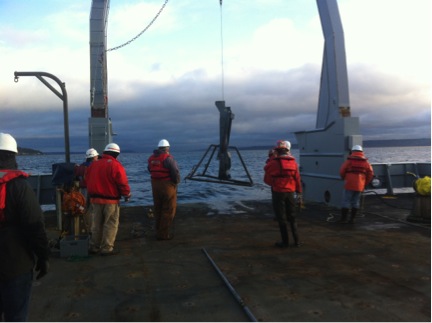 |
|
|
Fall 2014 The 2014 Annual Astrobiology Workshop A significant focus of UW Astrobiology's graduate program is to provide our students with opportunities for hands-on interdisciplinary research experiences, and in-the-field learning. Our annual workshops are multi-day educational field trips, and are a centerpiece of the interdisciplinary training in our Program. We have received overwhelmingly positive feedback from our students and alumni about this component of our curriculum, and many of you have told us that these experiences have been some of the most memorable and valuable aspects of your time in the UWAB program. However, our limited State funding for these workshops means that not all students who are interested in participating in a given field trip are able to do so. This year, we used donations to our Friends of Astrobiology Fund to help support attendance at the workshop. Even a small donation can make a big difference to an individual student, and we are very thankful for your support! UWAB students Russell Deitrick (Astronomy) and Meg Smith (ESS) attended this year's workshop, and reported back on their experiences: Our departure happened to coincide with a partial solar eclipse. Astronomy graduate student, Brett Morris, came prepared with sun-viewing glasses that let us see the eclipse safely. As we looked through the glasses, we began to appreciate the fact that we were watching the Sun while floating on the water. The Sun and liquid water are two things that make Earth a viable place for life. 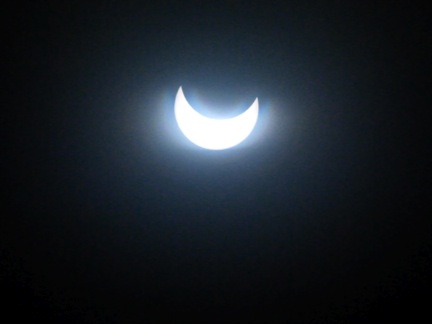 This year’s Astrobiology workshop was focused on the discipline of oceanography. Its science themes are described below. This year’s Astrobiology workshop was focused on the discipline of oceanography. Its science themes are described below.
Water: Jan Newton and Rachel Vander Giessen, oceanographers with the Applied Physics Lab (APL) at UW, enlisted the astrobiology students to help take water samples from a CTD (conductivity-temperature-depth) instrument. The instrument itself, called a “rosette”, consists of a circular frame about a meter in diameter and 24 cylinders that can be closed at different depths to enclose a small volume of water. This allows for measurement of the chlorophyll, nutrient, and dissolved oxygen content as a function of depth. Jan, Rachel, and their collaborators use the CTD to monitor the properties of the Sound in hopes of distinguishing natural variations, such as the salt-water intrusion—a seasonal flow of salty, oxygen-poor Pacific seawater that enters the Sound at depth, and the contribution of human activities. Our science PI, Jody Deming, and colleagues from UW Oceanography (including Shelly Carpenter) showed us our water samples under the microscope. In just a drop of water was a world almost more vibrant than our own. To get a better understanding of the diversity in the water, we attempted to culture the water samples. These hadn’t produced visible microbial colonies by the end of our voyage, but we hope to see the results in the near future—astrobiology in progress!
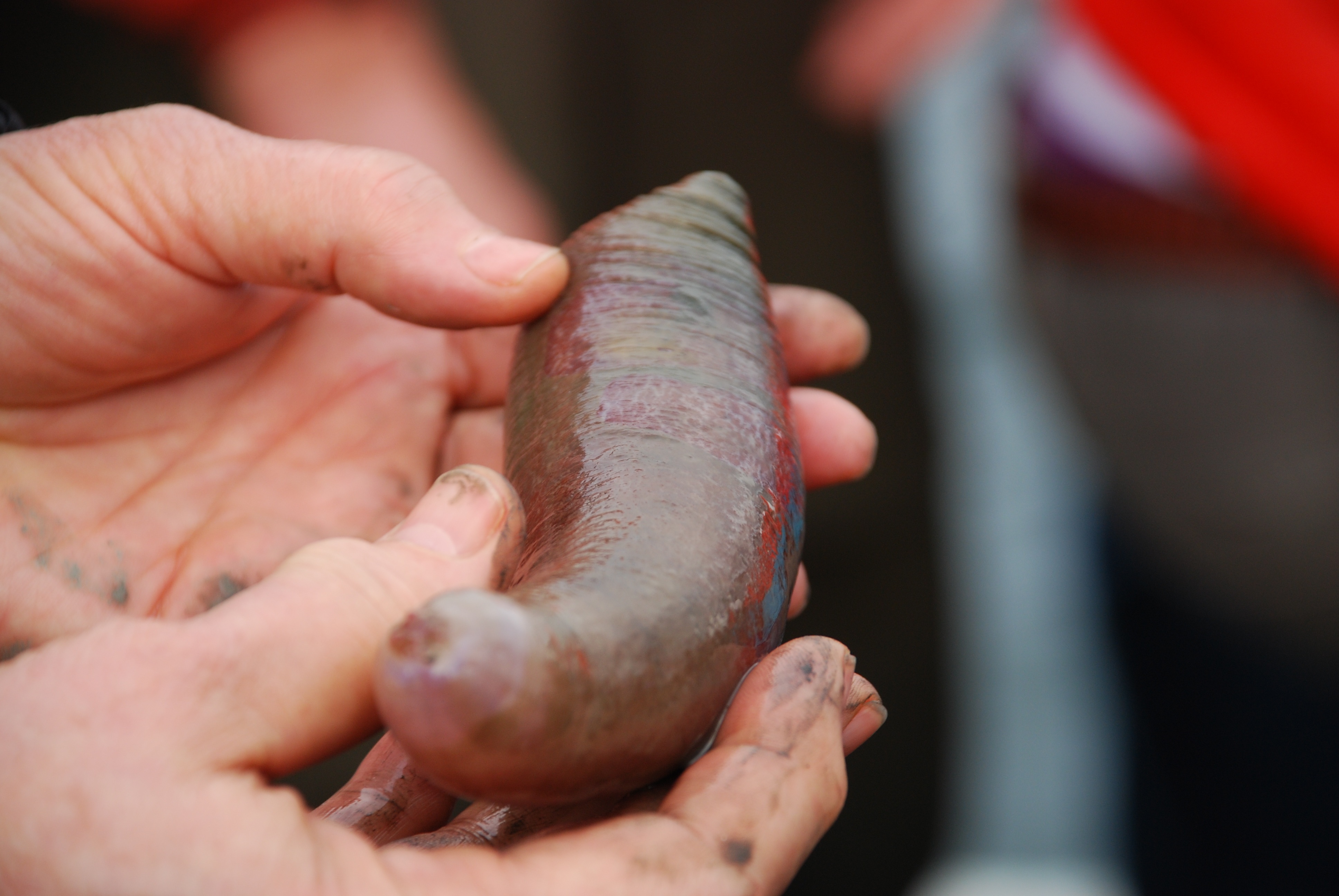
One exciting find appeared in a core taken offshore from Ballard in Seattle—a sea cucumber! This reminded us that although most astrobiologists think about searching for small life, large life could be there. Technology: It was simply amazing to see the variety of technology that is used to do oceanography on a mobile platform. We saw microscopes that one can move by hand, a CTD that you can climb on, and a 20-ft tall buoy that collects information about the state of the ocean. But probably the most incredible technology on board is the multi-beam sonar instrument used to map the seafloor and find methane seeps. UW Oceanography’s Brendan Philip, the resident expert on the machine, explained its use. As the ship sails along, this instrument emits acoustic waves to measure the depth of seafloor features (“bathymetry”) at each position, creating a 2 dimensional map of the ocean floor in much less time than ever before. There is an unexpected political element at work here—many marine borders between nations are defined by ocean floor features whose locations are poorly determined and sometimes disputed. This technology permanently settle these disputes.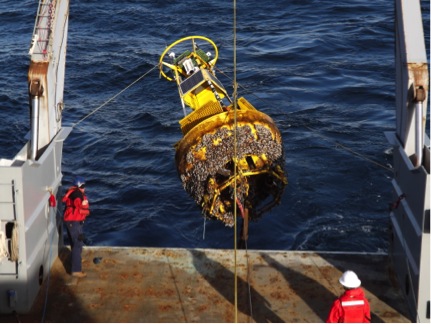
On Friday, the crew recovered two “moorings” from the continental shelf just west of the Olympic Peninsula. These moorings, as John Mickett (also from APL) explained, each consist of a buoy, an anchor, and a cable extending 100 meters below the surface and lined with instruments performing various measurements. One of the moorings, Cha Ba, has a communication system on top of the buoy that relays data back to the University, but some data cannot be broadcast, so the mooring must be recovered periodically. The continental shelf is the most biologically active region of the ocean, and these moorings were placed to gather data necessary to understand these ecosystems. It became clear to us at the end of it all—when we eventually send humans to another planet to do astrobiological research, we’ll need lots of equipment. On top of that, we’ll need to spend a large effort to sterilize that equipment. Doing astrobiology on other planets (let alone our own planet) is, and will continue to be, a difficult effort. But it will be worth it to find life elsewhere. And even if we don’t, it’s worth it to do the search and find what is out there. Miscellaneous life: Just for fun, we compiled a list of the macroscopic life we observed on our 3-day voyage:
To conclude, one thing is for sure: Earth is teeming with life, and we sure hope that there are other planets like ours. Thanks to all those from UW Oceanography, Astrobiology, and the Thomas G. Thompson research vessel that helped with our adventure to sea. Photos: (From Top to Bottom) 1) Students outside, in front of the Thompson’s bridge, enjoying the fresh air and scenic views.
2) The partial solar eclipse near maximum. 4) Astrobiology students filtering the water samples from the CTD. From left to right: Matt Koehler, Eddie Schwieterman, and Osa Igbinosun. 5) Bringing in a box core. 6) Science PI Jody Deming explains the amazing sea cucumber. 7) The crew recovering the Cha Ba mooring buoy, which is equipped with a communications system. The underside is covered in barnacles, which will need to be cleaned off. |
|
